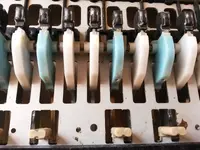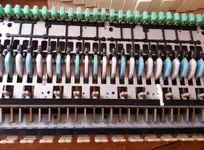D
dipole
New member
Hi.
Before I made the original post I tried with the top C and the tab broke. Luckily the spring and the front key stop hold the key firmly.
Luckily the spring and the front key stop hold the key firmly.
A few minutes ago (before I saw your post) I tried again and then managed to get one key out. The rest then had more space to wiggle and came out more easily (with no more broken tabs ).
).
The screwdriver just got in the shot I used a smaller/flater one.
Also some of the weights have micro cracks (a few white keys, black keys have a different design so they can't crack as easily).
Thanks for the reply, here are a few more pics.
Before I made the original post I tried with the top C and the tab broke.
 Luckily the spring and the front key stop hold the key firmly.
Luckily the spring and the front key stop hold the key firmly.A few minutes ago (before I saw your post) I tried again and then managed to get one key out. The rest then had more space to wiggle and came out more easily (with no more broken tabs
 ).
).The screwdriver just got in the shot I used a smaller/flater one.
Also some of the weights have micro cracks (a few white keys, black keys have a different design so they can't crack as easily).
Thanks for the reply, here are a few more pics.

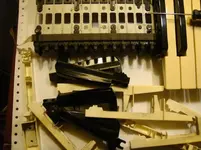

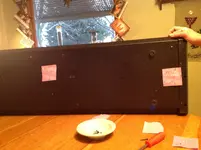
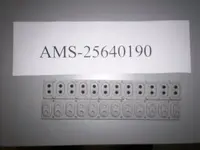
 You could try opening the board then re-seating all the connectors for the keybed. If that failed, carefully inspect the contact pc-boards - cold solder joints, cracks, etc.; re-test then if that fails, check out all the diodes with a multimeter.
You could try opening the board then re-seating all the connectors for the keybed. If that failed, carefully inspect the contact pc-boards - cold solder joints, cracks, etc.; re-test then if that fails, check out all the diodes with a multimeter. 
 so I'm now assured of safe and available spares close at hand. I did buy a Kurzweil PC3X (used) last year and enjoy it immensely but somehow I still love the feel of that old K2500XS and so, keep returning to play it regularly.
so I'm now assured of safe and available spares close at hand. I did buy a Kurzweil PC3X (used) last year and enjoy it immensely but somehow I still love the feel of that old K2500XS and so, keep returning to play it regularly.